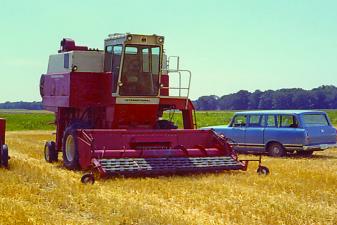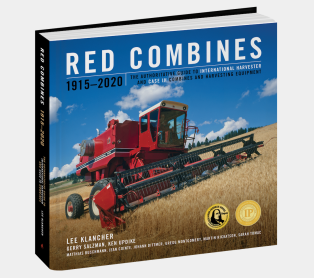The Early Days of Combines: Home for Christmas

The following excerpt is from Red Combines: 1915–2020 and tells the story of Axel Jarlson, a Swedish immigrant who came to America for opportunity and worked hard to find his way home to visit family for Christmas.
Axel Jarlson was fighting to stay alive with his family in Sweden. The winter of 1891 produced deep snow, six months’ worth, and the only way the farmer’s family could survive was to make wood carvings, cabinets, and mittens and sell them in town, ten miles from their farm.
“Swedish people who have money hold on to it very tightly,” Jarlson wrote, “and often we took things to market and then had to bring them home again, for no one would buy.”
Jarlson’s parents were sick the entire winter and all they had to eat was black bread and gruel. They had to sell the cows, and had no milk or cheese.
Jarlson’s older brother, Gustaf, left for America that winter. Their uncle paid $90—a vast sum—for Gustaf’s ticket to Minnesota. In 1899, Gustaf sent money for Jarlson and his sister to come to join him. Jarlson worked for his brother in Minneapolis and made $16 a month. He saved it until he had $304, then bought a farm for $150 and spent another $55.42 on supplies. He worked all winter clearing land and cutting wood, and planted twelve acres of land in April.
His 67-bushel wheat crop that year netted him $46.50. He augmented that by selling firewood for $1.25 per cord, his sister’s home-canned preserves, and other crops to gross $530. His expenses were $552.17, meaning he lost $22.17 during the course of the year. But the thrifty Swede had cash on hand and survived into 1902, when he grossed more than $1,200 and netted enough profit to afford to travel back to Sweden to celebrate Christmas with 600 of his fellow countrypeople.
He carried with him photographs of American women, one of whom had married his brother, Gustaf. “The Swedes who live in America like the old country girls,” he wrote, “because they know how to save money.”




